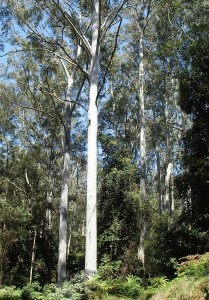A novel approach to quantifying the spatiotemporal behavior of instrumented grey seals used to sample the environment
Baker LL, Mills Flemming JE, Jonsen ID, Lidgard DC, Iverson SJ, Bowen WD. 2015. A novel approach to quantifying the spatiotemporal behavior of instrumented grey seals used to sample the environment. Movement Ecology 3:20 DOI: 10.1186/s40462-015-0047-4 | Find with Google Scholar »
|
Dear all,
Well I’ve survived my first week in the big office, hopefully you’ve all survived too! It’s been a busy week getting ready for S2 with enrolments in some of our units going through the roof and lots of adjustments needed as a consequence. Thanks to all involved.
Enjoy the weekend!
Michelle
General News and Announcements
Eureka Prize Finalists – Dave Raftos and Andy Barron
Huge congratulations to Dave Raftos and Andy Barron – both finalists in the Eureka prizes. Dave is a finalist in the Rural Research and Development Corporations Eureka Prize for Rural Innovation and Andy is a finalist in University of New South Wales Eureka Prize for Scientific Research as the Bee Team. See the website here for details.
PhD scholarships available
Got a domestic student interested in a PhD, able to start in 2015? There are still 20 scholarships available – see Adam Stow for details.
Professional Staff awards
Nominations for the Vice-Chancellor’s Excellence Awards for Professional Staff will open on 3 August and close on 31 August. We have many wonderful professional staff so see Michelle if you would like to nominate an individual or team. More information available here.
Faculty Awards night
This Friday 31 July is the Faculty’s Awards night – if you’d like to come along to support our students then RSVP here.
Taronga Zoo Science Week Event – volunteers needed
A win for Biology and the environment
These working printers were collected by The Bower for rehoming. The Bower is one of the few organisations that collects working electrical goods. Primarily they collect furniture and working white goods for re-use. Thanks to The Bower these printers will be put to use and won’t be going to landfill for some time. If you have excess furniture or equipment in good working order at home, that you no longer need, consider contacting The Bower (bower.org.au).
Change of Grade now Online
August SCB Sydney Conservation Cafe
Plant of the Week – Eucalyptus saligna – Sydney Blue Gum
Updated Volunteers List
New Publications
Embracing multiple definitions of learning
Barron, A. B., E. A. Hebets, T. A. Cleland, C. L. Fitzpatrick, M. E. Hauber, and J. R. Stevens. 2015. Embracing multiple definitions of learning. Trends in Neurosciences 38:405-407. | Find with Google Scholar »Shifting time: recent changes to the phenology of Australian species
Beaumont, L. J., T. Hartenthaler, M. R. Keatley, and L. E. Chambers. 2015. Shifting time: recent changes to the phenology of Australian species. Climate Research 63:203-214. | Find with Google Scholar »Optimising the use of nearshore fish aggregating devices for food security in the Pacific Islands
Bell, J. D., J. Albert, S. Andrefouet, N. L. Andrew, M. Blanc, P. Bright, D. Brogan, B. Campbell, H. Govan, J. Hampton, Q. Hanich, S. Harley, A. Jorari, M. L. Smith, S. Pontifex, M. K. Sharp, W. Sokimi, and A. Webb. 2015. Optimising the use of nearshore fish aggregating devices for food security in the Pacific Islands. Marine Policy 56:98-105. | Find with Google Scholar »Some new and noteworthy bryophytes from Antarctic Beech (Nothofagus moorei) forests of north-eastern New South Wales
Downing, A., R. Peacock, and H. Ramsay. 2014. Some new and noteworthy bryophytes from Antarctic Beech (Nothofagus moorei) forests of north-eastern New South Wales. Telopea 17:239-250. | Find with Google Scholar »Why biodiversity has so many enemies
Beattie, A. J. 2014. Why biodiversity has so many enemies. Telopea 16:185-193. | Find with Google Scholar »Technicolour deceit: a sensory basis for the study of colour-based lures
White, T. E., and D. J. Kemp. 2015. Technicolour deceit: a sensory basis for the study of colour-based lures. Animal Behaviour 105:231-243. | Find with Google Scholar »

